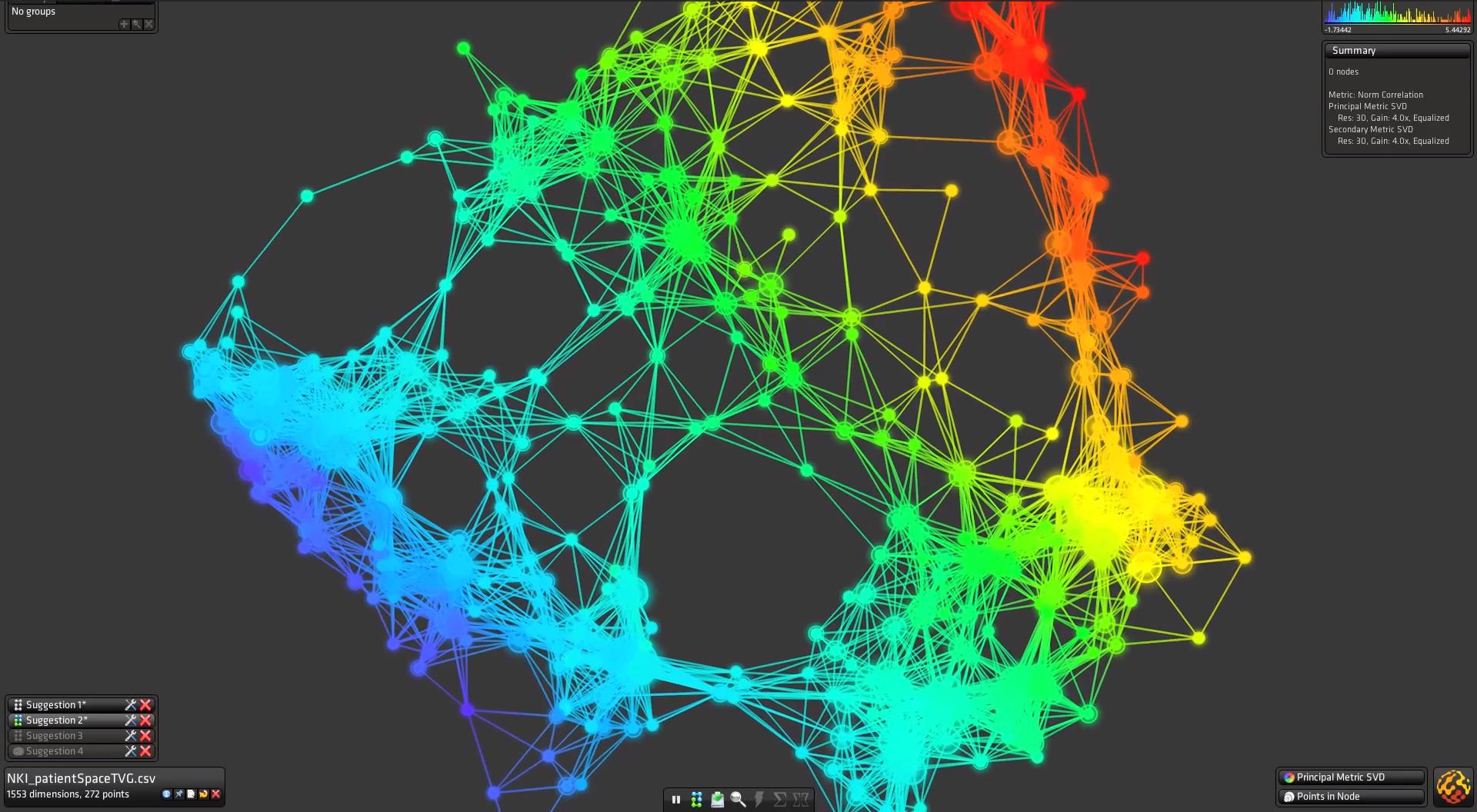The shortest form of this question is:
How much TDA can be done with tSNE?
Specifically, I'm referring to the application of TDA to clustering data, so, think along the lines of Ayasdi's implementation:
My understanding is that TDA constructs simplical complexes on a continuum of scales, to then find persistent components. This is an oversimplification because there is also work done by the Mapper algorithm to recognize persistent homologies.
Whereas, tSNE is a 2-D stochastic embedding, which assumes two separate distributions: a gaussian distribution that generates neighbors in high dimensions, and a Cauchy distribution in 2 dimensions, and then constructs an embedding that preserves distances as best as possible between the original space and the embedded space. The analogy to persistent components can be made in our choice of the tSNE perplexity parameter, which specifies the width of each Gaussian distribution, and can therefore give us a simplical complex where edges connect pairs of points that generate each other with some minimal probability.
I would think then that tSNE is equivalent to TDA if we also compute persistent homologies?

